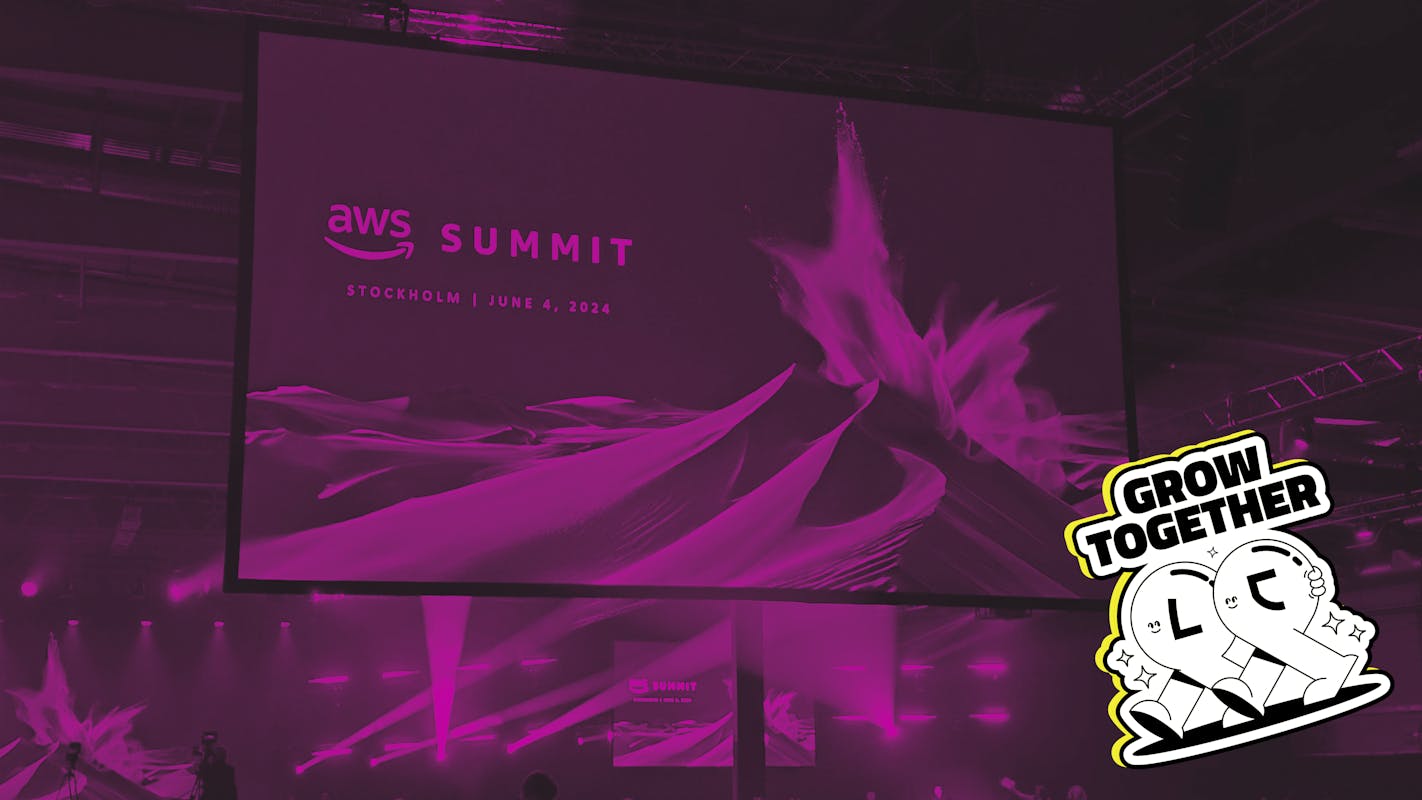ARTICLE / On the Road with Lynchburg Collective
My Thoughts on AWS Summit Stockholm 2024

The AWS Summit is a global series of conferences hosted by Amazon Web Services, where attendees can learn about AWS products, services, and latest innovations through sessions, workshops, and networking events.
The Opening Experience
From the moment I stepped into the venue, the atmosphere was buzzing with excitement and innovation. Thousands of technology enthusiasts, industry experts, and AWS partners gathered, all ready to share insights and explore new possibilities.
This vibrant setting led into the opening keynote, which provided a comprehensive introduction to the summit. Featuring real-world customer stories, the session highlighted AWS’s significant impact across various industries, particularly in the Nordics.
Keynote speakers, including Becky Weiss, VP Distinguished Engineer at AWS, and Dag Lindbo, Head of Software Technology at Ericsson, delivered compelling insights on AWS’s role in driving innovation and digital transformation in the Nordic region, setting a compelling stage for the day's discussions.
Diving Deep into Sessions
The summit featured over 50 sessions, but I focused on those that aligned closely with my professional and personal interests. Here are some of the highlights:
Security and Serverless Architecture
The summit provided profound insights into modern architectural approaches, with a strong emphasis on security and serverless computing. One of the standout sessions was led by Christian Cassel from Datadog, focusing on container security. As containers are integral to today's tech landscape, understanding how to secure them is crucial. Cassel's discussion offered valuable strategies to enhance the security of containerized workloads, addressing the latest challenges and solutions.
Following this in-depth look at container security, Iris Hunkeler from Netlight captivated the audience with an engaging introduction to serverless computing. Her session aimed to demystify serverless technology for newcomers while highlighting its extensive applications. Hunkeler emphasized the flexibility and cost-effectiveness of AWS Serverless, suitable for projects ranging from rapid prototyping at hackathons to managing large-scale production environments. Her practical examples showed how serverless solutions could streamline development processes and ensure scalability and efficiency, making it an appealing option for various use cases.
Continuing the theme, Keith O'Leary, a Senior Technical Instructor from AWS, explored the more technical aspects of serverless architectures. He focused on the differences between Amazon SNS and Amazon EventBridge, providing a nuanced look at asynchronous event-driven applications. O'Leary's detailed comparative analysis further enriched our understanding and showcased the practical implications for technology deployment.
Scaling on AWS to 72 Million Users
In a highly informative session, Jyri Seiger from AWS, along with Robert Christiansen from Too Good To Go, detailed the strategic implementations that enabled scaling to support 72 million users worldwide. This discussion provided a fascinating look at the architectural decisions and optimizations necessary for handling rapid user growth.
Key insights included overcoming technological bottlenecks and the importance of resilient infrastructure to accommodate the escalating demands of a successful startup. This session was particularly relevant to understanding the scalability challenges and solutions in the cloud environment, providing valuable lessons for businesses aiming for massive growth.
Mixed Impressions on Depth
While the topics were cutting-edge, the depth of some sessions left something to be desired. The discussions around generative AI were fascinating, yet some presentations could have benefited from a more detailed exploration of the technical challenges and solutions. This year, there seemed to be an overwhelming emphasis on AI, overshadowing other crucial areas such as serverless architectures and container technologies.
As a DevOps consultant, I found this shift a bit disappointing, as I had hoped for a more balanced approach that included these critical aspects of cloud infrastructure. This was a sharp contrast to previous summits, which typically offered a broader range of topics catering to various interests and technological focuses.
Catching Up with the Big Players
The AWS Summit expo area buzzed with activity, featuring a vibrant network of interactions among an impressive lineup of 47 companies. Among them, I had the opportunity to engage in particularly enlightening conversations with representatives from Datadog, MongoDB, Snyk, and Red Hat.
Each of these companies had their unique offerings and insights into the evolving cloud landscape:
DataDog
Our discussion centered around their powerful monitoring and security platform, which integrates and automates cloud infrastructure, providing invaluable insights across systems, apps, and services.
MongoDB
I explored MongoDB's latest developments in database technology, particularly their flexible, scalable solutions for managing massive volumes of data in real-time, which are crucial for today's dynamic applications.
Snyk
Conversing with the Snyk team, I delved into the critical importance of securing application dependencies and source code in development pipelines, an area where Snyk excels with its developer-first approach.
Red Hat
My interaction with Red Hat was particularly insightful as we discussed their advancements in open-source solutions that support enterprise environments, emphasizing hybrid cloud infrastructures and management.
Looking Ahead
Attending various sessions at the summit, I found myself reflecting on how the presented technologies could be woven into my daily responsibilities as a DevOps consultant. For instance, the session on serverless architectures led by Iris Hunkeler opened up new avenues for thinking about automation and scalability — core components of my work. The flexibility and cost- effectiveness of AWS Serverless could potentially revolutionize how we approach project scalability, especially for high-growth scenarios in projects I consult for.
Similarly, the discussions on container security resonated deeply, as maintaining the security of containerized environments is a challenge we face consistently. The strategies discussed could significantly improve our security posture.
This summit not only provided a comprehensive overview of the current landscape but also aligned perfectly with the challenges and solutions we are exploring in my professional sphere, making every session an invaluable learning experience directly applicable to enhancing the services we provide.
